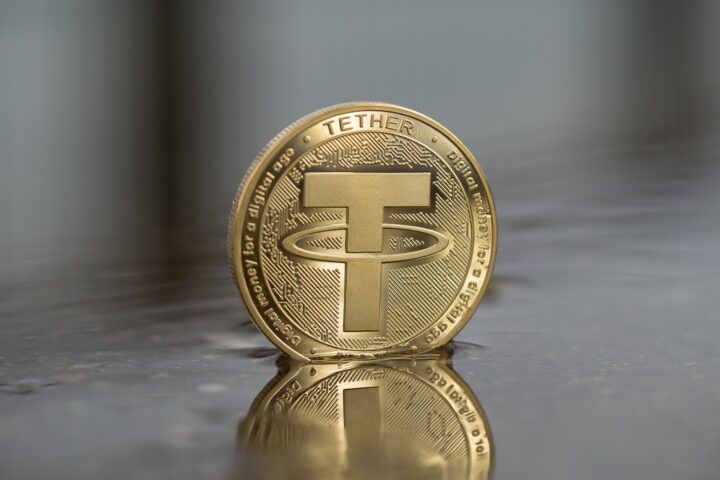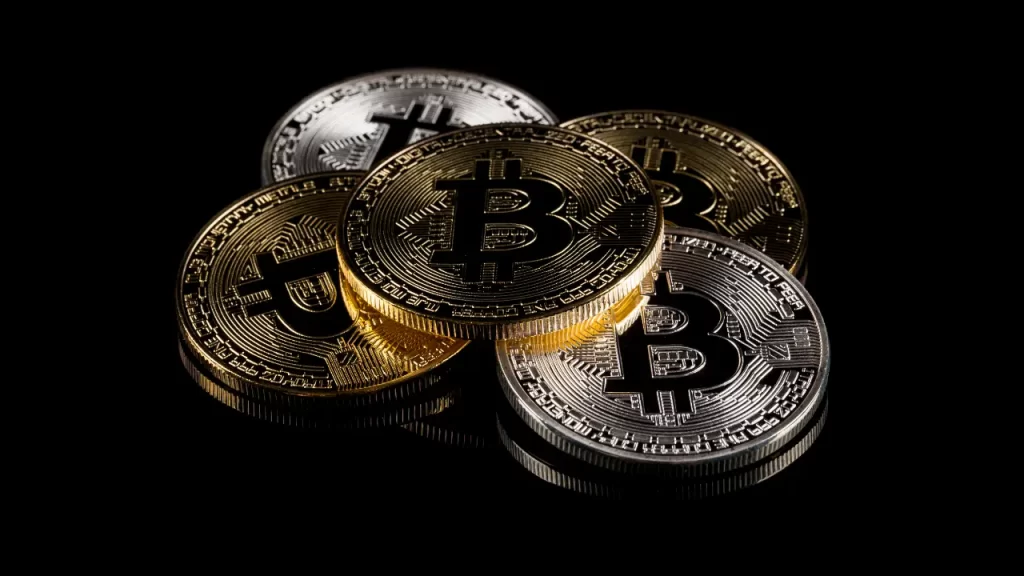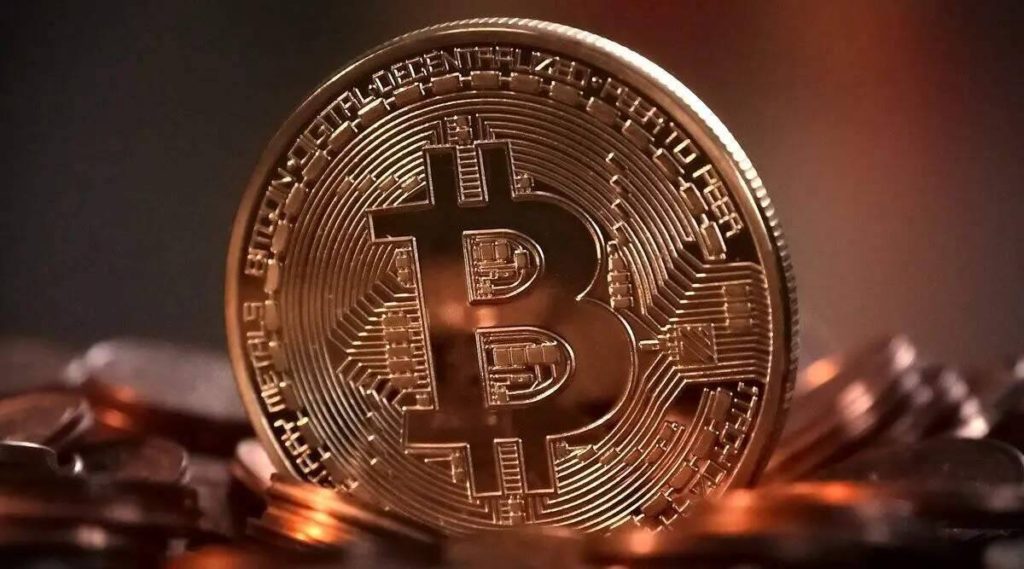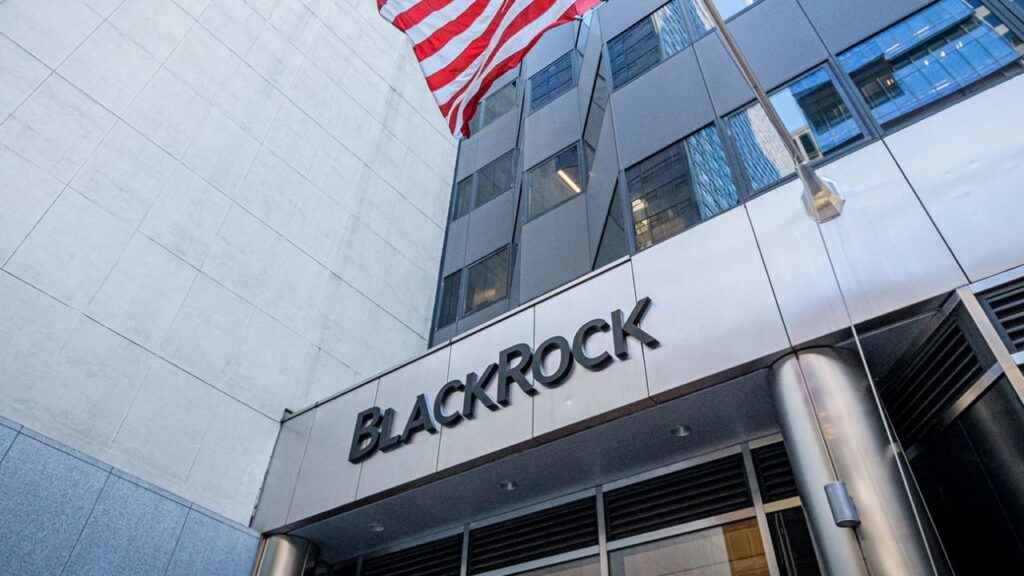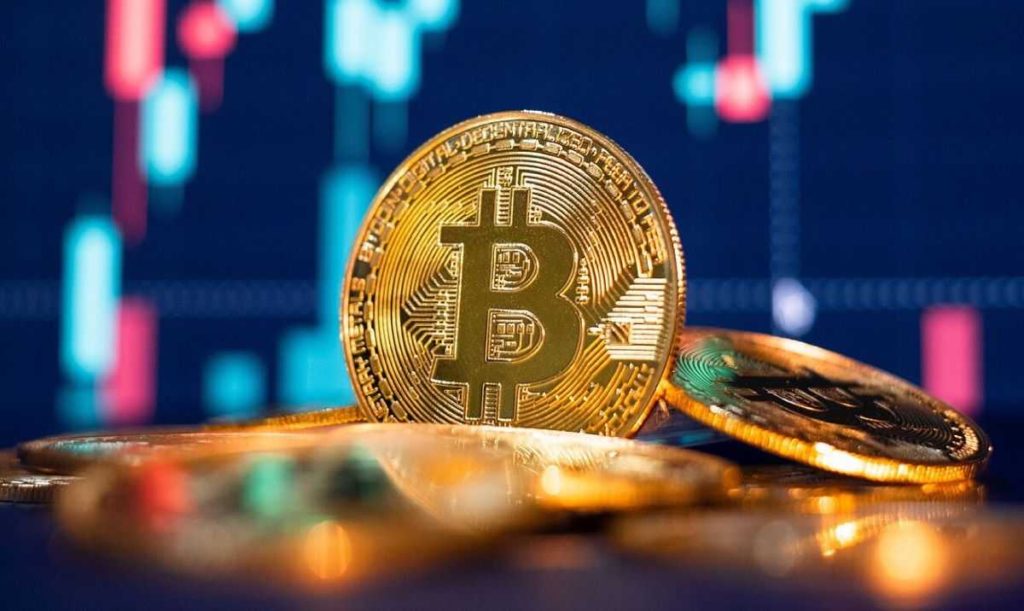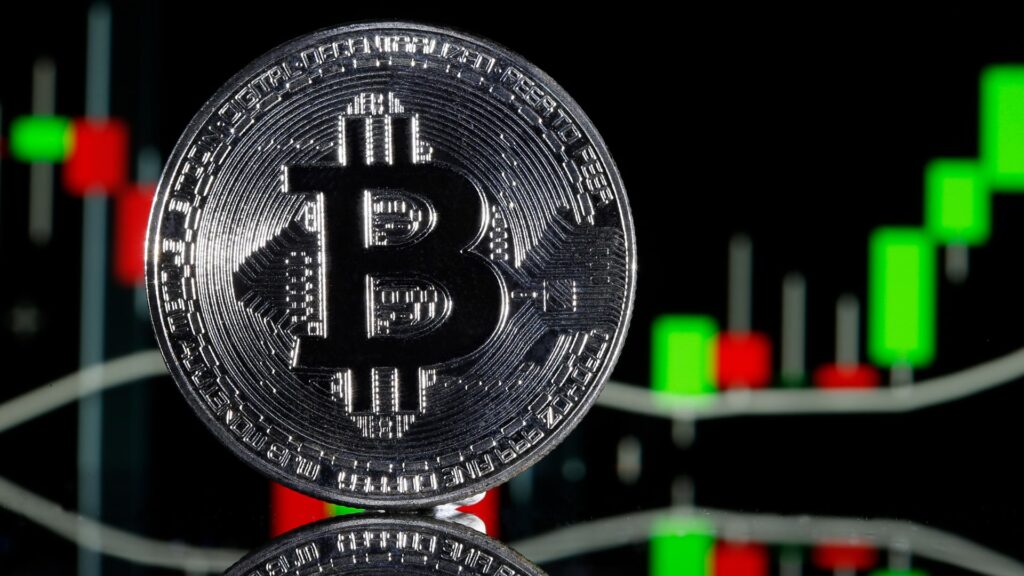Venture capitalist and billionaire Chamath Palihapitiya recently discussed Bitcoin’s significant progress and its imminent impact on American society.
During an episode of the All-In Podcast, Palihapitiya emphasized the importance of the approval of spot market Bitcoin exchange-traded funds (ETFs), describing it as a pivotal development for Bitcoin’s integration into mainstream financial systems.
Palihapitiya believes that Bitcoin is still in its early stages but predicts it will soon become a widespread topic of conversation.
He expressed his views by saying, “We’re going to get to a tipping point where everybody really talks about this. I still don’t think we are there yet.
I think we’re just at the beginning, but when you see the inflows into these ETFs, it’s a very big deal because it just allows every mom-and-pop individual to buy some to the extent that they want to own or they want to speculate on it, whatever it is.”
He further stated that the recent developments in the Bitcoin sphere have not only proved skeptics wrong but have also laid the groundwork for a constructive future for the cryptocurrency.
In his view, the approval of Bitcoin ETFs has opened the doors for everyday investors to participate in the cryptocurrency market, which marks a significant shift in the financial landscape.
In addition to Bitcoin, Palihapitiya pointed out that the success of Bitcoin ETFs could pave the way for the approval of ETFs for other cryptocurrencies, such as Ethereum.
READ MORE: Consensys-Backed Transak Achieves System and Organization Controls (SOC) 2 Type 2 Compliance
He suggested that the potential approval of an Ethereum ETF follows logically from the approval of Bitcoin ETFs, highlighting a broader trend of cryptocurrencies becoming integral to the financial sector.
“So I think it’s been a very big year, and I think that psychologically it’s proven a lot of folks wrong, and it’s a setup for something really constructive,” he commented.
Highlighting the momentum of this movement, Palihapitiya concluded, “The other thing I’ll say is that it’s not just Bitcoin but as goes Bitcoin, there are a handful of other things.
“People are now speculating that there’s going to be an Ethereum ETF that gets approved as well because if you approve one, there’s probably legitimate cause to approve a few others, so these things are becoming part of the financial fabric, and I think that that should not be underestimated.”
As of the time of his comments, Bitcoin’s value stood at $69,465, indicating the cryptocurrency’s strong market performance and its growing acceptance within the financial ecosystem.
To submit a crypto press release (PR), send an email to sales@cryptointelligence.co.uk.
Despite the impressive rally that pushed Bitcoin‘s price beyond $70,000, on-chain data indicates that Bitcoin whales, or holders of large amounts of Bitcoin, are not in a hurry to sell.
This trend is seen as Bitcoin’s whale population has increased, with the number of unique addresses holding at least 1,000 Bitcoin climbing to 2,104 as of March 7.
This number, however, still falls short of the peak of 2,489 addresses recorded in February 2021 when Bitcoin was trading above $46,000.
The growth in the number of large Bitcoin holders is partly attributed to the success of the United States spot Bitcoin exchange-traded funds (ETFs), which saw over $52.5 billion in cumulative trading volume by March 4.
The reluctance of whales to sell suggests they anticipate further price increases.
Their actions are closely watched as they have the potential to significantly sway Bitcoin’s price due to the size of their trades.
READ MORE: Breaking: BlackRock to Diversify Global Allocation Fund with Spot Bitcoin ETFs
Julio Moreno, the head of research at CryptoQuant, highlighted the notable increase in whales’ Bitcoin holdings, stating on X on March 7, “The growth of whales’ Bitcoin holdings is going parabolic.”
This sentiment is supported by Glassnode data indicating a sharp rise in transfers from exchanges to whales, reaching new record highs, while the volume of whale to exchange transfers has only modestly increased, suggesting a strong influx of new investors and a lack of profit-taking among existing large holders despite the high prices.
The fundamental demand for Bitcoin remains robust, partly fueled by the United States spot Bitcoin ETFs. The BlackRock iShares Bitcoin Trust (IBIT), for example, experienced record daily inflows of $788 million on March 5.
With Bitcoin’s price potentially targeting around $92,500, supported by a combination of technical, on-chain, and fundamental indicators, including a bull pennant pattern on the charts, the market’s outlook remains bullish.
To submit a crypto press release (PR), send an email to sales@cryptointelligence.co.uk.
In 2023, the United States experienced a significant rise in cryptocurrency-related investment fraud, with the Federal Bureau of Investigation (FBI) highlighting it as the major source of investment fraud losses.
According to the FBI, the nation saw a staggering 53% increase in crypto investment fraud, with losses surging from $2.57 billion in 2022 to approximately $3.94 billion in 2023.
This figure constituted about 86% of the total $4.57 billion lost to investment fraud across the board.
The FBI report draws attention to the growing trend of victims being lured into cryptocurrency scams, promising them high returns on their investments.
“These scams are designed to entice those targeted with the promise of lucrative returns on their investments,” the FBI noted.
Among these, romance scams have emerged as a prevalent method, wherein criminals create fake online personas to build relationships and trust with their victims.
They then concoct compelling stories to convince the victim to transfer cryptocurrency, only to vanish subsequently.
The analysis firm Chainalysis, in December 2023, identified romance scams as the cause for at least $374 million in suspected stolen cryptocurrency during the year.
Additionally, Cointelegraph reported on January 1 that phishing scams had ensnared over 324,000 cryptocurrency users, leading to approximately $295 million in digital assets being lost to wallet drainers in 2023 alone.
The issue of cryptocurrency scam victims is not confined to the United States; it is a global concern.
The Australian Competition and Consumer Commission reported in April 2023 that Australians had lost AU$221.3 million ($146.9 million) to investment scams involving cryptocurrency in 2022.
This marked a 162.4% increase from the previous year, indicating the expanding reach and impact of these scams worldwide.
The significant rise in crypto-related fraud underscores the urgent need for increased awareness and more robust protective measures for investors globally.
To submit a crypto press release (PR), send an email to sales@cryptointelligence.co.uk.
The Bitcoin market is currently teeming with optimism, projecting a potential surge toward or even beyond the $90,000 mark in the imminent weeks.
This bullish outlook is anchored in a combination of encouraging technical analyses, on-chain data, and fundamental factors.
Currently, Bitcoin (BTC) is experiencing a period of consolidation, oscillating within a triangular pattern that mirrors a bull pennant, especially after reaching a new all-time high of $69,210.
Such formations are often interpreted by traditional analysts as bullish continuation patterns, hinting at a possible price escalation akin to the height of the prior uptrend, usually accompanied by a spike in trading volume.
Given Bitcoin’s recent performance and its consolidation post-new highs, experts predict a significant breakout, targeting a price around $92,500 in the forthcoming weeks, marking a 35% increase from its current position.
The recent upturn in Bitcoin’s price is also aligned with an increase in capital inflows into United States-based exchange-traded funds (ETFs), which currently boast over $53 billion in reserves, a notable leap from $27.95 billion at their inception in January.
READ MORE: Travala.com Unveils Exclusive Bitcoin Cashback Rewards for Elite Travelers in Crypto Loyalty Program
The surge in ETF inflows suggests a growing investor interest, likely driving demand for Bitcoin as fund managers purchase additional assets to mirror the ETF‘s indexed composition or sector.
Market analyst Timothy Peterson highlighted the positive momentum triggered by the Bitcoin Spot ETF approval, suggesting a potential climb to $100K by October 2024.
Additionally, the anticipation surrounding the upcoming Bitcoin halving event adds to the bullish sentiment.
Historically, halving events, which reduce the mining reward by half, have preceded price increases.
Analysts also draw parallels between Bitcoin’s current market dynamics and the period leading up to its November 2021 rally toward $69,000.
Market analyst Jelle notes similarities in the price action around all-time highs, indicating a potential upcoming surge akin to the last bull cycle, albeit with distinct characteristics.
Jelle elaborates, “Bitcoin is acting similar to 2020’s all-time high breakout,” describing a pattern of a failed breakout followed by consolidation and a subsequent successful surge.
If this historical pattern repeats, Bitcoin could be setting its sights on surpassing $75,000 in the near future, reinforcing the optimistic forecasts for its price trajectory.
To submit a crypto press release (PR), send an email to sales@cryptointelligence.co.uk.
BlackRock, a global asset management powerhouse, is set to diversify its Global Allocation Fund (MALOX) by acquiring spot Bitcoin exchange-traded funds (ETFs).
A recent update to its United States Securities and Exchange Commission (SEC) filing on March 7 indicates the firm’s interest in integrating physically backed Bitcoin exchange-traded products (ETPs), including its own iShares Bitcoin Trust (IBIT) and ETFs from other providers.
The statement from the filing emphasizes, “The fund may acquire shares in ETPs that seek to reflect generally the performance of the price of Bitcoin by directly holding bitcoin — ‘Bitcoin ETPs’ — including shares of a Bitcoin ETP sponsored by an affiliate of BlackRock.”
These investments will focus on Bitcoin ETPs listed on national securities exchanges, ensuring compliance with trading standards.
The BlackRock Global Allocation Fund, established in 1989, aims to yield returns through a dynamic investment approach, involving U.S. and international equities, debt, and money market securities from major corporations like Microsoft and Apple.
As of the recent update, MALOX boasts $17.8 billion in assets under management.
READ MORE: Travala.com Unveils Exclusive Bitcoin Cashback Rewards for Elite Travelers in Crypto Loyalty Program
However, MALOX isn’t the sole BlackRock fund eyeing spot Bitcoin ETFs.
A similar intention was revealed for its Strategic Income Opportunities Fund (BSIIX) in an SEC filing dated March 4.
The firm’s venture into Bitcoin ETFs gained momentum with the launch of the iShares Bitcoin Trust on January 11, paralleled by nine other spot Bitcoin ETFs in the U.S.
Remarkably, the iShares Bitcoin Trust has shown exponential growth, with its Bitcoin holdings surging over 7,000% from 2,621 BTC at its inception to 187,531 BTC by March 7, 2024, valuing its assets at $12.6 billion.
Moreover, BlackRock is exploring the potential of a spot Ether ETF, having filed an application for the iShares Ethereum Trust in November 2023.
The financial community is closely watching to see if U.S. regulators will greenlight a spot ETH ETF in 2024, considering it took over a decade for the SEC to approve a spot Bitcoin ETF in the nation.
This move by BlackRock underscores its proactive stance in expanding its cryptocurrency offerings, reflecting a growing interest in digital asset investments within traditional financial sectors.
On March 8, Bitcoin soared to unprecedented heights, propelled by the U.S. unemployment data which strengthened the argument for potential interest rate cuts.
The cryptocurrency reached an all-time high of $70,184 on Bitstamp, as per data from Cointelegraph Markets Pro and TradingView, amidst optimistic market movements encouraged by the latest jobless statistics from February.
These figures surpassed expectations, suggesting that inflationary pressures might be diminishing due to strict economic policies.
The national unemployment rate was reported at 3.9%, a slight increase from predictions, while the job growth numbers for January were adjusted downwards.
The Kobeissi Letter, a trading analysis platform, noted that the market responded positively, with stocks climbing.
This upward trend was attributed to the increased unemployment rate and significant revisions to job additions.
The cryptocurrency market, including Bitcoin and various altcoins, rallied along with stocks, marking a significant moment as Bitcoin crossed the $70,000 threshold for the first time.
READ MORE: Bitcoin Hits Record High in South Korea, Sparks Debate Over ‘Kimchi Premium’
Market analysts highlighted the importance of this milestone occurring ahead of a scheduled block subsidy halving, suggesting that Bitcoin could reach its macro cycle peak sooner than anticipated.
Mikybull Crypto, a prominent voice in the market, remarked on social media platform X (formerly Twitter), “Bitcoin is doing what it has not done in history. Cycle top is coming faster than what people projected.”
Additionally, the jobs data indicated a weakening U.S. dollar, with the U.S. dollar index (DXY) dropping to near its two-month low at 102.36, down almost 5% from its peak earlier in the year.
This decline in dollar strength further fueled speculation regarding the Federal Reserve’s next moves.
Although the Fed’s decision on interest rates is awaited on March 20, expectations remain largely hawkish, with the CME Group’s FedWatch Tool estimating a mere 3% chance of an interest rate cut.
Throughout the week, Fed officials, including Chair Jerome Powell, have reiterated a cautious stance on future monetary policies, maintaining conservative language despite the optimistic market trends spurred by the latest economic indicators.
Travala.com, a cryptocurrency-friendly travel agency, is launching a unique Bitcoin cashback program aimed at rewarding its most loyal customers.
This initiative is designed to capitalize on Bitcoin’s (BTC) scarcity, offering an innovative reward for the platform’s Smart Diamond tier members.
This tier is part of the loyalty program operated by the AVA Foundation’s blockchain platform, with the program details shared in an exclusive announcement to Cointelegraph.
Juan Otero, the CEO of Travala.com, emphasized Bitcoin’s enduring presence and its increasing appeal to a broader audience, especially following the approval of the first spot Bitcoin exchange-traded fund.
He stated, “Bitcoin is here to stay, and it’s now becoming more appealing to mainstream audiences, thanks to the recent approval of the first spot Bitcoin exchange-traded fund.”
According to Otero, the Bitcoin cashback rewards not only enhance the attractiveness of using cryptocurrencies for everyday transactions but also ensure that rewards are credited swiftly, within 24 hours after completing a trip.
Travala.com users, especially those eligible for the rewards, enjoy complete freedom in how they utilize their Bitcoin cashback.
READ MORE: Laser Digital Unveils Milestone DeFi Partnership with Pyth Network
This includes paying for various travel services on the platform or transferring their BTC to external wallets, exchanges, or platforms.
Notably, Bitcoin ranks as one of the top three payment methods on Travala.com, with around 9% of the platform’s travel bookings paid in BTC, totaling over $5 million in transactions for flights, hotels, and activities in 2023 alone.
However, the program is exclusive, requiring users to own a Travel Tiger NFT and stake 2,500 AVA tokens for Smart Diamond membership.
With only 1,000 Travel Tiger NFTs available, minted on the Ethereum blockchain and priced at a floor of 2.6 Ether (approximately $9,800), the program offers a limited opportunity for travelers to earn rewards.
Travala advocates for the potential of cryptocurrency-based cashback programs to disrupt traditional Web2-based models.
By leveraging Bitcoin, the platform aims to reduce fees associated with conventional payment methods and mitigate the risk of chargeback fraud.
Otero also sees the Bitcoin rewards initiative as a gateway for introducing newcomers to the Web3 ecosystem, highlighting the AVA Foundation’s role in providing cashback and loyalty rewards, payment discounts, and exclusive access through its native AVA token.
On March 5th at 3:00 pm (UTC), Bitcoin’s (BTC) value soared to an unprecedented 96,734,000 South Korean Won (approximately $72,504) on Upbit, South Korea’s leading cryptocurrency exchange.
This event underscored the notable price disparity often referred to as the Kimchi Premium or Korea Premium Index, which has been on a rising trajectory alongside BTC’s value since the beginning of February.
According to CryptoQuant, a notable on-chain data resource, the Korea Premium Index climbed from 5.19 on February 28 to 6.84 by March 5.
This increase aligned with Bitcoin’s price reaching a historic peak above $69,200 on the same day, fueled by the continuous influx of investments into the United States’ Bitcoin ETFs.
“The Bitcoin price rally is mainly driven by institutional demand in the United States,” CryptoQuant analyst Ho Chan Chung explained to Cointelegraph.
Contrarily, the price surge in South Korea is propelled predominantly by retail spot purchases due to the absence of spot Bitcoin ETFs in the nation.
The phenomenon of the Kimchi premium first came to light in 2016 and was highlighted in a 2019 study by the University of Calgary.
The study revealed that, from January 2016 to February 2018, Bitcoin prices on South Korean exchanges were on average 4.73% higher than those in the United States.
The disparity was even more pronounced during Bitcoin’s December 2017 bull run, with South Korean exchanges listing Bitcoin at nearly 50% higher than global averages.
READ MORE: Nigerian Official Clarifies Misquoted $10 Billion Binance Fine Amid Tightening Crypto Regulations
This led CoinMarketCap to exclude some Korean exchanges from its listings due to the significant price discrepancies.
In 2021, the Kimchi premium reached a zenith of 21.56% on May 19, coinciding with Bitcoin trading above the $36,000 mark, ahead of hitting its previous all-time high in November 2021.
Although some traders attempt to capitalize on these price variances through arbitrage, the premium predominantly persists due to market inefficiencies, especially during notable uptrends.
As Bitcoin continues to captivate global interest, South Korea’s financial regulator is deliberating the introduction of spot Bitcoin ETFs, a move that could potentially harmonize these price disparities.
“Among authorities, I am one of those who are positive about virtual assets,” Lee Bok-hyun, the governor of the Financial Supervisory Service, mentioned in a March 5 Reuters report, indicating ongoing internal discussions on the matter.
Despite initial reluctance from South Korea’s financial authorities in January regarding the regulation of Bitcoin futures ETF sales, they acknowledged that the brokerage sales of spot Bitcoin ETFs might contravene the Capital Markets Act.
Currently, the Korea Premium Index persists, with Bitcoin’s price on Upbit around 93,800,000 KRW ($70,000), in contrast to its approximately $67,000 value in other markets.
In an exclusive interview with Cointelegraph, Ivo Crnkovic-Rubsamen, the Chief Strategy Officer and Technical Lead for Trading at the dydx exchange, pinpointed algorithmic trading firms as the primary cause of recent disruptions at some of the world’s largest centralized cryptocurrency exchanges.
According to Crnkovic-Rubsamen, the intense retail interest and swift price movements have prompted these firms to significantly amplify their order and cancelation requests to maintain their positions in the market.
“It’s common for a trading firm to 20 times the output of orders and cancels at a very busy time,” he explained.
This surge in activity coincides with notable technical difficulties experienced by leading exchanges such as Binance, Coinbase, Kraken, and Bybit.
These issues emerged shortly after Bitcoin’s price surpassed $60,000 for the first time in more than two years on February 28.
Crnkovic-Rubsamen remarked that such situations are typical in bull markets when there’s a spike in retail interest and substantial price movements.
READ MORE: Bitcoin Withdrawals Surge as Exchanges See Largest Outflows in 5 Years Amid Price Rally
The fallout from these outages included Citron, an investment research firm, recommending a short sale on Coinbase stock, which then saw an 11.36% increase in its value within 24 hours, trading at $229.15 according to Google Finance.
Crnkovic-Rubsamen highlighted a significant difference between centralized exchanges (CEXs) and decentralized exchanges (DEXs), particularly in how they manage trading limits for market makers.
In CEXs, trading limits can be customized based on trust, leading to potential system overloads during bull markets.
This contrasts with DEXs, where trading limits are protocol-defined, eliminating favoritism and ensuring stability regardless of market conditions.
He also touched upon the reliability of centralized exchanges, acknowledging their efficiency and optimization under normal conditions but noting their vulnerability during peak periods.
“Centralized matching engines are awesome at performance, they’re super optimized and efficient, but when they go down, that’s it […] There is a reliability trade-off there,” Crnkovic-Rubsamen concluded, highlighting the inherent stability challenges faced by centralized platforms compared to their decentralized counterparts during times of intense market activity.
On March 5, Bitcoin’s market value soared to an unprecedented peak of $1.35 trillion, marking a significant milestone in the cryptocurrency’s history.
This surge was fueled by a 3.35% increase in Bitcoin’s price over the previous 24 hours, reaching $67,322 by 12:55 pm UTC.
Over the past week, the first-ever cryptocurrency saw an impressive gain of over 17%, as reported by CoinMarketCap.
This record-setting performance momentarily positioned Bitcoin as the world’s eighth-largest asset, surpassing the $1.347 trillion market cap of silver, the globe’s second-most valuable precious metal, as per CompaniesMarketCap.
The remarkable climb followed a record-breaking daily close of $68,245 on March 4, eclipsing its prior highest close of $67,525 on November 8, 2021.
This development has fueled predictions by analysts that Bitcoin’s price might hit the $100,000 threshold by the end of 2024.
A significant factor contributing to Bitcoin’s bullish momentum has been the recent approval of spot Bitcoin exchange-traded funds (ETFs) in the United States.
READ MORE: Bitcoin Withdrawals Surge as Exchanges See Largest Outflows in 5 Years Amid Price Rally
A March 4 Bitfinex research report highlighted a 44% surge in Bitcoin’s value in February, attributing the growth to a $7.5 billion investment in Bitcoin ETFs.
This influx not only catalyzes market expansion but also underscores a positive market sentiment and the potential for further investment.
Furthermore, Bitcoin futures on centralized exchanges have witnessed record-high open interest, signifying strong investor confidence in a continuous uptrend.
Bitfinex analysts noted that the total open interest for Bitcoin futures contracts exceeded $26 billion on March 1, breaking the previous high of $24 billion set in late 2021.
Adding to the flurry of activity, MicroStrategy, the leading corporate investor in Bitcoin, announced plans to raise $600 million to finance additional Bitcoin purchases.
The funding, disclosed in a March 4 X post by executive chairman Michael Saylor, will be sourced through senior convertible notes, highlighting the company’s ongoing commitment to Bitcoin investment amidst a buoyant market.

